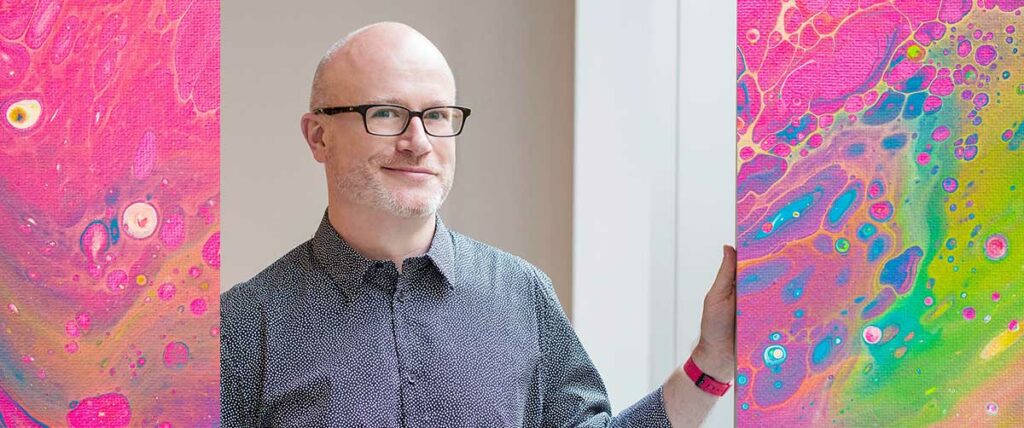Three key insights for cultivating creativity

Canada Research Chair in Creative Innovation and Leadership and Creative Industries Professor, Dr. David Gauntlett
Hello! I’m David Gauntlett. Three years ago, the University persuaded me to move from the UK to take up a Canada Research Chair in Creativity in what was then called the Faculty of Communication and Design. By now, it’s so full of creativity that we call it The Creative School.
Among other things, I set up the Creativity Everything lab (external link, opens in new window) , where we aim to unlock all kinds of creativity for all types of people. We are very hands-on and practice-based, which means that we like actually doing stuff rather than just writing academic descriptions of things. Building on this approach, The Creative School (opens in new window) this month welcomed the very first students into the PhD in Media and Design Innovation, a new practice-based program where ideas are explored through doing and prototyping and trying things out.
There’s a whole area of research on creativity which is about how we can assess and quantify creativity. For me, that’s tiresome and unnecessary because one thing about creativity is: we do know when it has happened. As a creator, you know it — you feel it. That’s ‘just’ the evidence of your own senses — but being creative on your own terms is the best that you can do. And doing it in your own way is vitally important — that’s what makes it distinctive and valuable.
Beyond that moment of creation, there’s a whole other set of activities about getting that creativity noticed and making an impact. These are important too and can be creative in themselves, but the interesting burst of making a distinctive thing has to come first.
I’m writing this just before the start of the new term, where I will be teaching my elective course, ‘Your Creative Self’. It’s very much about reflecting on our individual creative processes, but there are some general insights that we can all benefit from. Here are three of them:
1. Creativity is about activity and confidence
Primarily, it’s important to understand that creativity is a thing that you do. Anybody who you think of as ‘very creative’ is someone who has found or made the time to do creative things. It’s not any kind of superpower. It’s just, that’s how they spent some time. That means, in addition, that creativity has a lot to do with confidence. The people we think of as creative are the people who believe that they can do something, that it has value, and that they can show it to others without feeling ashamed. In the great Venn Diagram of people who are creative and people who believe that they’re creative, the overlap is almost 100%.
2. Inspiration comes from many places
We can take inspiration from all kinds of places. Today’s independent pop stars and musicians are good examples. We may call them ‘artists,’ and creating new artistic works is one of their jobs. But they have many other jobs too. They are entrepreneurs. They are promoters. They are advocates and activists. Every one of them has to build a business around their work and find ways to connect with people to build meaningful relationships. They have to sell their work, in one way or another, but in today’s streaming world, how artists get income is many and varied, and often not that much to do with some recordings of songs.
3. Generosity is central to creative leadership
Above all, we try to cultivate a spirit of generosity. Creativity happens when people feel motivated and supported, so even when we’re all working on diverse things, a culture of mutual understanding and enthusiasm can make all the difference. Leadership in creativity comes not from showing that you made the ‘best thing’, but that you reached out a supportive hand to others and helped build their ideas.

David Gauntlett is Canada Research Chair at The Creative School, where he directs the Creativity Everything lab (external link, opens in new window) . He has worked with organizations such as the BBC, Tate, and LEGO. He is the author of 10 books, including Making is Connecting (second edition, 2018) and Creativity: Seven Keys to Unlock Your Creative Self (2022).

The Creative School at Ryerson University
The Creative School is a dynamic faculty that is making a difference in new, unexplored ways. Made up of Canada’s top professional schools and transdisciplinary hubs in media, communication, design and cultural industries, The Creative School offers students an unparalleled global experience in the heart of downtown Toronto.